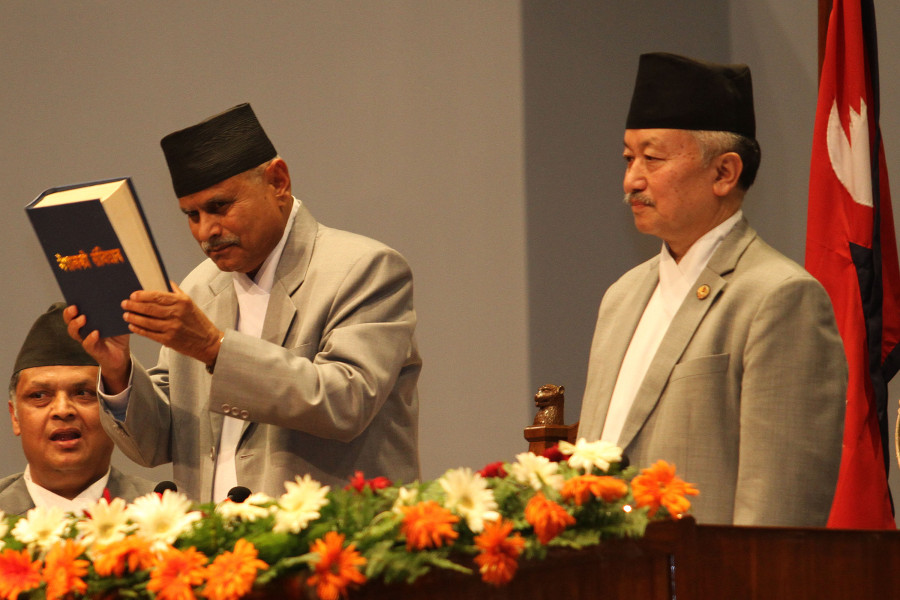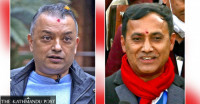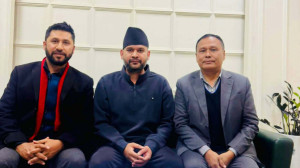Politics
Constitutional provision for floor test exposes a major oversight by its drafters
The constitution demands that Oli pass a vote of confidence after Samajbadi Party’s withdrawal of support, but his party commands a comfortable majority.
Binod Ghimire
The debate over whether Prime Minister KP Sharma Oli needs to table a motion for the vote of confidence after the Samajbadi Party’s withdrawal of support for the government has not only exposed a serious flaw in the constitution but also a lack of long-term vision on the part of its drafters.
Article 100 (2) of the Constitution of Nepal says “the prime minister shall table a motion for the vote of confidence in the House of Representatives if the party which the prime minister represents is divided or the party in the government withdraws its support.”
According to some experts, if this provision is to be followed to the letter, the prime minister needs to pass a floor test, as the Samajbadi Party has withdrawn support. A floor test is when the prime minister moves a vote of confidence in the legislature to show that he still commands a majority. If the motion doesn’t pass, the prime minister must resign.
However, since Oli’s Nepal Communist Party commands a comfortable majority with 174 seats in the 275-member House of Representatives, there is no need for him to table a motion for the vote of confidence, others say.
The confusion stems from the fact that the people who drafted the constitution made a major oversight during the writing.
“The phrase ‘if the party in the government withdraws its support’ was included under the general assumption that none of the parties would ever be able to secure a majority,” said Rewati Raman Bhandari, who was a member of the constitution drafting committee of the Constituent Assembly.
“We meant well in spirit, that the floor test would only be applicable in case there is no majority government,” Bhandari told the Post. “We assumed that there will be a hung parliament, given the electoral system we have adopted.”
Under the current electoral system, 165 lawmakers are elected under the first-past-the-post system while 110 are elected under the proportional representation system to constitute the 275-member House of Representatives, which elects the prime minister.
“Since the adoption of the mixed electoral system, where parliamentarians are elected under the proportional representation system also, no party had secured a majority in Parliament,” said Bhandari.
Bhandari’s assumption is not entirely baseless, as the country had seen a series of coalition governments in succession. The average term of these governments was nine months, with the prime minister resigning or failing a vote of confidence once a coalition partner withdrew support.
However, the English translation of the same constitutional provision, done by Nepal Law Commission, an independent government body that drafts, integrates and revises existing laws, says: “If the political party which the prime minister represents is divided or a political party in coalition government withdraws its support, the prime minister shall table a motion in the House of Representatives for a vote of confidence within thirty days.”
“We didn’t use the word coalition because we thought no party would command a majority,” Bhandari told the Post. “However, in spirit, the majority government doesn’t need to prove a vote of confidence even if its minor partner withdraws its support.”
The last time an Oli-led government fell was in 2016 when the Maoist Centre suddenly withdrew support. Today, the two parties are merged to form the Nepal Communist Party, which commands a comfortable majority.
Experts on constitutional affairs, however, are divided over Oli’s floor test.
Bhimarjun Acharya, a constitutional expert, said that everyone—Oli in this particular case—should follow what is written in the constitution and not what members of the drafting committee think or say.
“Oli must table a motion for the vote of confidence within a month if he respects the constitution,” said Acharya. “The government must face the floor test. There are no ifs or buts. It is clear that the incumbent government commands a clear majority. But Article 100(2) is also very clear. The Nepali version of the constitution prevails over any other translation when it comes to constitutional matters.”
Purna Man Shakya, a professor at the Nepal Law Campus, disagreed.
According to Shakya, the floor test is needed only when the party leading the government doesn’t have a majority.
“As lawmakers couldn’t visualise the present situation, they didn’t mention the coalition government,” said Shakya.
With 174 lawmakers, the ruling Nepal Communist Party commands 63 percent of the federal parliament. By losing the Samajbadi Party’s 16 seats, the ruling party has only lost its two-thirds majority.
“The Oli government doesn’t need to pass a vote of confidence as it commands a thumping majority,” said Shakya.




 11.12°C Kathmandu
11.12°C Kathmandu













%20(1).jpg&w=300&height=200)

